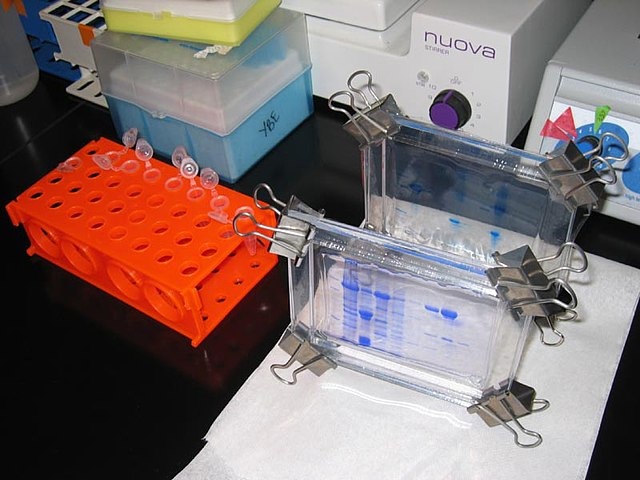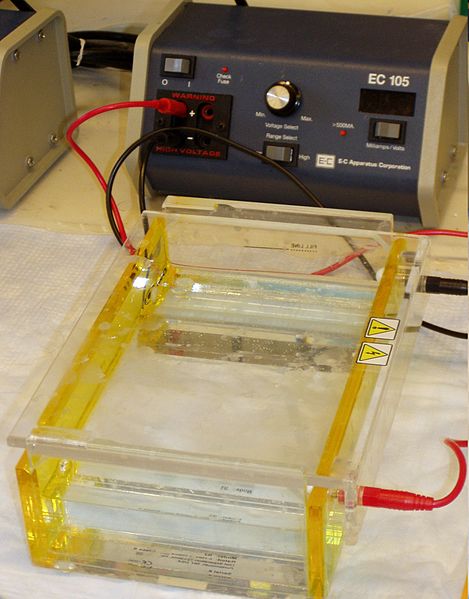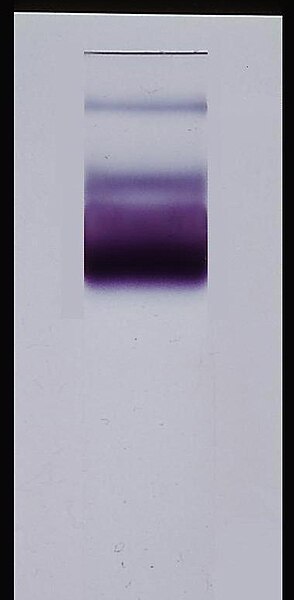Polyacrylamide gel electrophoresis
Polyacrylamide gel electrophoresis (PAGE) is a technique widely used in biochemistry, forensic chemistry, genetics, molecular biology and biotechnology to separate biological macromolecules, usually proteins or nucleic acids, according to their electrophoretic mobility. Electrophoretic mobility is a function of the length, conformation, and charge of the molecule. Polyacrylamide gel electrophoresis is a powerful tool used to analyze RNA samples. When polyacrylamide gel is denatured after electrophoresis, it provides information on the sample composition of the RNA species.
Picture of an SDS-PAGE. The molecular markers (ladder) are in the left lane
Two SDS-PAGE-gels after a completed run
Gel electrophoresis is a method for separation and analysis of biomacromolecules and their fragments, based on their size and charge. It is used in clinical chemistry to separate proteins by charge or size and in biochemistry and molecular biology to separate a mixed population of DNA and RNA fragments by length, to estimate the size of DNA and RNA fragments or to separate proteins by charge.
Gel electrophoresis apparatus – an agarose gel is placed in this buffer-filled box and an electric current is applied via the power supply to the rear. The negative terminal is at the far end (black wire), so DNA migrates toward the positively charged anode(red wire). This occurs because phosphate groups found in the DNA fragments possess a negative charge which is repelled by the negatively charged cathode and are attracted to the positively charged anode.
Inserting the gel comb in an agarose gel electrophoresis chamber
Specific enzyme-linked staining: Glucose-6-Phosphate Dehydrogenase isoenzymes in Plasmodium falciparum infected Red blood cells





